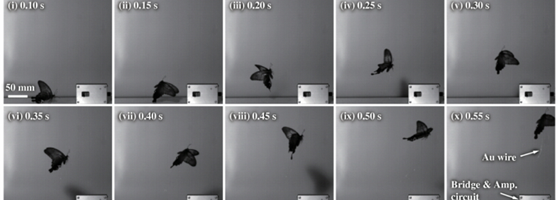Tiny sensors on butterflies reveal big aerodynamic feats

Japanese scientists are using tiny pressure sensors to gain new insight into the seemingly physics-defying flight of swallowtail butterflies, according to a report by Environmental Research Web.
Theoretically, butterflies should not achieve lift if air pressure is evenly distributed across a slowly flapping wing. The sensors, developed by scientists from the University of Tokyo and Chiba University, showed that air pressure varies across the wing’s surface. For example, the pressure on the tip of the wing was ten times greater than the force applied by the butterfly.
The sensor is basically a small cantilever arm that moves and records data. The sensor, electrode and wires combined weigh 35 milligrams, less than the butterflies generally eat in a single feeding.
Results of the study may be used to develop insect-like robotic fliers. These fliers could act like small surveillance drones used to survey restricted or dangerous areas. The research may also be used to build large-scale artificial wings.
The research is published in the journal Bioinspiration & Biomimetics.
Image: Takahashi et al./Bioinspir. Biomim.





0 comments